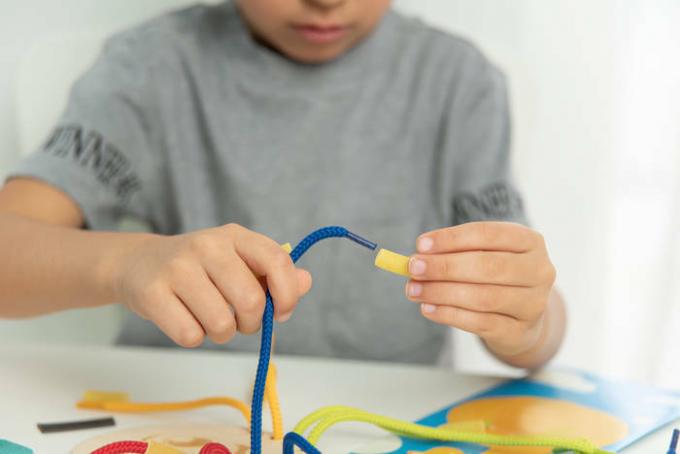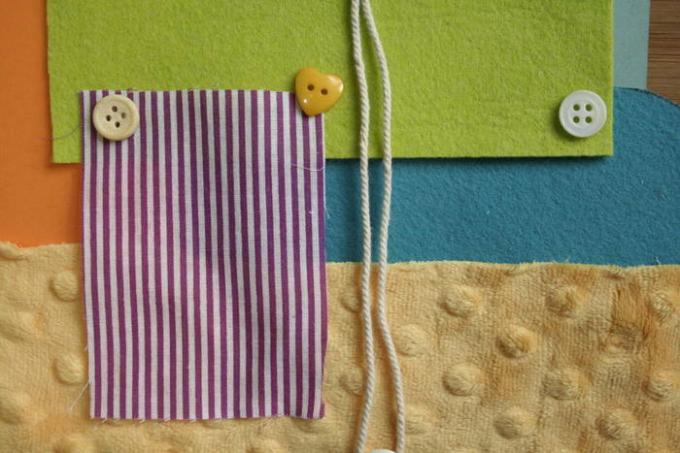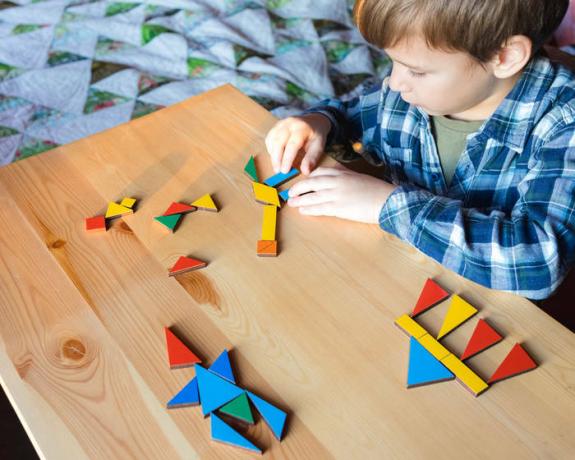How to make educational toys for a child from what is at home in a matter of minutes
Every mother strives to develop her baby. Fortunately, today it is not difficult to do this. Children's stores offer a huge assortment of educational toys for every age, taste and wallet. However, it so happens that an expensive sorter takes a child at most for a couple of days. At the same time, he can be played for hours in the kitchen with pots, spoons or clothespins. Try something like this before spending money on fancy development toys. do it yourself. We have selected several simple and not too expensive options for educational toys from what is at hand.
Educational toys are in trend today. Sorter for fine motor skills, balance bar for gross motor skills, puzzles for logical thinking, touch balls and whole sets for hand-eye coordination. All this is bought by young children in huge quantities, and in fact for good reason. The child acquires the necessary skills through the game. The more options for interaction the toy offers him, the more new skills the kid will be able to develop and develop.
However, ordinary household items do a good job with this task. Even if they are not as bright and colorful as store toys - in fact, at an early age, a child does not care what to play. Even more. It has been proven that playing with familiar things expands the scope of a child's social orientation, helps to quickly master everyday skills and develop non-standard thinking. And one more plus: if the kid knows how to play with "improvised" means, he will never be bored at a party, in a restaurant or in other "adult" places where there are no toys for children.
Pasta beads
Pasta is the leader among educational toys “from what is at home”. They can be sorted out, sorted, decorated, made into pictures and strung on a string. The only caveat is that the game with pasta should take place under mom's supervision so that the baby does not accidentally swallow the pasta and put it in his ear or nose.
Stock up at the store with several packages of pasta of various shapes. Suitable for sorting "horns", "shells", "bows", "scallops", "spiral". One of the simplest tasks is to mix several types of pasta in one bowl and invite the child to arrange them in different piles according to the forms. This "task for Cinderella" perfectly develops fine motor skills, attentiveness and perseverance.

Beads and lacing with pasta are interesting for children even of primary school age / istockphoto.com
But pasta beads are a creative task. Take the feather pasta and paint it with your child. You can take watercolors, but you will get brighter beads if you paint the pasta with gouache. "Beads" dry quite quickly - while you paint the last, the first can already be strung on a thread. Girls can make such beads for themselves, and boys - for their mother. Be prepared that with these beads you will have to walk down the street for a couple of days. After all, the best decoration for a child is one that he made himself.
Magic box
All moms know what happens when a small child is left alone with a pack of wet or dry wipes. The kid will mercilessly gut an expensive hygiene item in just 5-10 minutes. Take note of the child's desire to remove various things from the closed box. This is a great idea for a sensory development toy.

Choose different fabrics for the magic box so that the baby develops a tactile sensation / istockphoto.com
For the toy, you need a small cardboard box. Take one so that it is convenient for the child to run the handle there. You can paste over the box with bright colored paper or pictures. But practice shows that the child is much more interested not in what is outside, but what is inside. Cut a hole at the top of the box - just enough for your hand to go through, but not enough to look in. Fill the box with shreds of different textures and colors. You can take any scraps of fabrics that are in the house - cotton, linen, silk, jeans, felt, terry, tulle, pieces of fur. The more different shreds there are in the box, the more interesting it will be for the kid to get them.
Treasure hunters

You can search for treasures in any bulk products that you have at home / istockphoto.com
Another option for a "quick" toy for developing a child's sensory abilities is a large bowl of semolina. Anything can be "hidden" there. Take a variety of items: plastic animal figures, coins, clothespins, large beads, construction kit parts. Hide all this "in the sand" in front of the child and invite him to find the treasure. Children are happy to tinker in soft, free-flowing semolina and enthusiastically "dig up" hidden objects. This game can be combined with learning to count. For example, Mom hid five items - let's count how many you have already found.
Cardboard liners

Geometric inserts can be made with your own hands / istockphoto.com
Homemade cardboard inserts are no worse than similar wooden toys from the store. And they are made in literally half an hour. Take two pieces of cardboard (here it is better to use thick cardboard from boxes, rather than thin colored cardboard for creativity). On one piece, draw geometric or any other shapes that come to your mind, and carefully cut them out with a clerical knife. Glue the piece with holes to another piece - it will serve as a base so that the insert figures do not fall out. The figures themselves can be painted with paints - so you and your child will master not only the concept of form, but also the concept of color. The inserts also develop attention and motor skills, because the child needs not only to find a place for the figure, but also to place it correctly in the hole.
Another version of the game made of cardboard is "fold as in the picture". Prepare some simple drawings of geometric shapes (Christmas tree, house, sun, steam locomotive, little man). Cut the exact same figures from colored cardboard (here, on the contrary, it is better to take bright cardboard for creativity) and invite the kid to collect from the figures what is drawn in the picture. This is an excellent task for logical thinking, because the kid will need to choose the necessary figures and arrange them correctly.

To assemble an animal from geometric shapes, you need to use your imagination / istockphoto.com
Puzzles for toddlers
Initially, jigsaw puzzles were a toy for preschool and school children. And only recently puzzles for kids have appeared on sale - with bright single pictures, divided into two or three parts. Such puzzles are not too expensive, but they quickly become boring to the child. After several "trainings" the kid is no longer interested in collecting the same
But such children's puzzles can be easily done with your own hands even every day. Creative option (for those who can draw) - draw a simple picture and color it with your child. Cut the drawing into pieces and have your child put them together in the correct order. The everyday option is to find pictures on the Internet and print them on a color printer. Cut into pieces in the same way and give to the child. You always need to start with one picture, divided into two parts, and then you can add new ones. For example, take pets and mix "halves" of a cat, dog, cow, goat, and so on.
You will also be interested in reading:
TOP 11 educational games for children from 1 to 2 years old
What to play with a child in quarantine: TOP-4 educational games
How to develop mindfulness in a child: TOP 4 games

